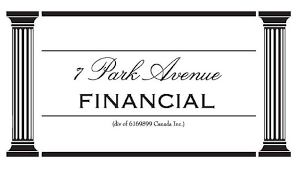|
Asset Based Lending - A Smart Cash Flow Strategy!
Business Success Is Hard – Use Asset Based Lending To Your Advantage !
YOUR COMPANY IS LOOKING FOR CANADIAN ASSET FINANCE ASSET-BASED LENDING CASH FLOW FINANCING!
UNLOCK THE POWER OF YOUR BUSINESS ASSETS
UPDATED 07/05/2025
You've arrived at the right address! Welcome to 7 Park Avenue Financial
Financing & Cash flow are the biggest issues facing businesses today
ARE YOU UNAWARE OR DISSATISFIED WITH YOUR CURRENT BUSINESS FINANCING OPTIONS?
CONTACT US
CALL NOW - DIRECT LINE - 416 319 5769 - Let's talk or arrange a meeting to discuss your needs
EMAIL - sprokop@7parkavenuefinancial.com

"Assets are only as valuable as their ability to generate cash flow when you need it most." - Warren Buffett
ASSET-BASED LENDING - YOUR ALTERNATIVE FINANCING SOLUTION!
Asset-based lending in Canada often brings a straightforward question from our clients, namely: Can you explain asset finance cash flow solutions to us?
Businesses all over Canada in every industry keep hearing about a loan transaction via nontraditional lending solutions for their businesses. In many cases, their competitors are already taking advantage of them. They want to know more for better financial performance, so let's dig in.
Unlock Your Business Sales & Valuable Assets for Immediate Capital
Cash flow problems don't wait for perfect timing.
When opportunities arise or challenges mount, traditional loans can take months to approve—if they approve at all. Your valuable inventory and receivables sit there while bills pile up.
Let the 7 Park Avenue Financial team show you how Asset based loans transform your existing business specific assets into immediate working capital, giving you the financial flexibility you need when you need it most.
3 Uncommon Takes on Asset Based Loans
-
The Asset Velocity Advantage: Most businesses think of assets as static wealth builders, but asset based loans turn your inventory and receivables into dynamic cash flow generators. Your assets work twice—once as operational tools and again as funding sources.
-
The Credit Score Bypass: While traditional lenders scrutinize credit histories, asset based lenders focus on asset quality and liquidation value. A company with poor credit but excellent inventory management can often secure better terms than a high-credit business with weak assets.
-
The Growth Acceleration Paradox: Asset based loans become more valuable as your business grows because your borrowing capacity increases with your asset base, creating a self-reinforcing cycle of expansion funding.
What Is Asset-Based Lending?
In today's challenging business environment, it's all about access to business loans and cash flow for a company's ability to thrive and survive! Asset-based lending is secured lending finance, allowing a business to use its sales and business assets such as:
-
Accounts receivable
-
Inventories
-
Fixed assets/property, plant and equipment/rolling stock
-
Commercial real estate owned by the business
These assets become collateral and a "borrowing base" for a loan or line of credit availability.
This allows the company to maintain the liquidity needed to fund day-to-day operations and cover short-term expenses. Businesses utilize asset-based lending as an alternative to traditional bank financing.
Asset-based lenders are experienced in valuing business assets on the balance sheet and use that expertise to provide the maximum amount of funding as a line of credit or business term loan solution.
What Is the Difference Between Asset-Based Lending vs. Traditional Bank Lending?
The key differences between asset-based loan solutions and unsecured loan/cash flow-based loans and lending by banks revolve around the focus of each type of lending.
For asset-backed loans, it is all about assets. For banks, it is all about cash flow. Banks view cash flow performance as the key to repayment, while asset-based lenders view business assets as sources of repayment.
For any business, it's all about the ability to borrow capital, and companies have different options and choices.
Improving Cash Flow and Working Capital
So, is business financing via asset finance a difficult concept to understand?
Hardly. Asset-based financing, often called "ABL" by those in the industry, is simply the method of obtaining the maximum working capital you need from your assets, which typically include receivables, inventory, and in many cases some equipment and/or real estate. That's as simple as it gets.
So how can monetizing your assets be your business's ultimate working capital tool?
Although it's been in existence for many years, asset finance or asset-based lending (we also call it a "working capital facility") is coming into vogue.
It doesn't take rocket science to understand that, given traditional financing almost totally collapsed in the 2008-2009 global meltdown, companies began searching for options and alternatives to their business financing needs. In our post-pandemic/COVID interest rate and business lending-challenged market, access to business capital is as crucial as ever.
Lenders like asset-based financing simply because they are using their expertise and knowledge in your assets to help you manage cash flow in your business.
Uses of Asset-Backed Financing
Although many companies turn to asset-based lending when they can't access traditional bank financing, the reality is that this type of financing has some unique characteristics that allow you to utilize the financing for other reasons.
Those include:
In many cases, it's "buffer" financing, allowing you to return to more traditional "bank-type" financing.
How Does Asset-Based Lending "ABL" Work? Improve Cash Flow with Asset-Based Finance
As we stated, it's very simple for us to explain to clients what an ABL facility is, but it's a bit more complicated to get them to understand how it works.
The best way to explain it is to simplify it all and say that you should consider asset finance via a working capital facility as simply a "revolving line of credit around all your business assets."
Can that be any simpler to understand? We don't think so.
Criteria for Evaluating Your Business Credit Needs
Typically, the process is as follows: After the traditional "application" process, there is an agreed-upon value put on all your business assets.
As we said, 99% of the time the assets under this financing include receivables, inventory, equipment, and in some cases real estate. The most common assets, though, are receivables and inventory.
Your firm provides regular monthly, and in some cases weekly, updates on the values of these assets, and you in turn use your regular bank account to draw down on funds as you need them to run your business.
Similar to a bank revolving line of credit facility, your asset-based financing facility fluctuates every day as a dollar of capital flows through your business.
You purchase product, you generate a receivable, you collect your receivable, and of course, the process repeats itself.
Asset-Based Credit Lines Grow Automatically as Your Business Grows!
If there is one simple advantage of asset-based lending, it's that the financing grows as you grow sales and assets! You can truly say you have access to unlimited funding, albeit often at a higher cost.
Other forms of asset-based lending such as SR&ED Tax Credit Financing, leasing, factoring receivables, and PO Finance are being routinely used by many of your competitors. Why not your firm?
Asset finance strategies help you do that. Fifty percent of Canadian businesses report that the inability of their sales growth to generate funds hinders their progress. Top experts such as Canada's BDC cite growing a business as the most common goal of the vast majority of firms.
Key Takeaways: Alternative ABL Financing
-
Asset-based loans are a method of secured financing via business assets on the balance sheet, allowing a company to access business capital
-
A cash flow loan relies on a company's ability to generate cash flow as repayment
-
Cash flow loans are suitable for businesses that are not asset-intensive, such as service-based companies that rely on higher profit margins
-
Asset-based loans are best suited to businesses that are more capital-intensive and who have balance sheet assets
Case Study: Manufacturing Company Success
Company: Mid-size automotive parts manufacturer in Ontario
Challenge: Needed $2.8M for inventory expansion to meet increased demand
Solution: Asset based loan secured by inventory and receivables
Timeline: 18 days from application to funding
Outcome: 34% revenue increase within 12 months, maintained credit line for ongoing needs
Key Benefit: Faster approval than traditional banks allowed company to capitalize on market opportunity
Conclusion: Unlocking the Power of Business Assets for Cash Flow
Asset-based lending will allow your company to borrow for lines of credit or short-term bridge loans based on balance sheet asset values.
The traditional focus on cash flow is secondary, as the asset-based business lender funds are based on inventory, accounts receivable, and fixed asset values.
Even real estate owned by the business can be bundled into the facility or used as collateral for a separate bridge loan solution. Asset-based lenders offer higher borrowing margins against the face value of business assets.
As an example, 90% of receivables can be financed. Receivables finance/factoring is a stand-alone business financing solution within the asset-based lending business model.
Call 7 Park Avenue Financial, a trusted, credible business financing advisor in this area to ensure you understand the options and, of course, the benefits of this unique and creative method of business financing.
FAQ: Frequently Asked Questions People Also Ask More Information
What is asset-based lending, and how does it differ from other forms of financing?
Asset-based lending is a form of secured business lending that allows a business to use key business assets such as receivables, inventory, and equipment as collateral for a line of credit or term loan. This method of financing physical assets via specialized asset-based lenders is the primary difference and determining factor versus bank financing cash flow lending techniques, which focus on various measures of business score around financial history, cash flow generation, outside collateral, and loan covenants tied to an unsecured credit facility. The majority of companies using asset-backed financing are not able to receive some or all of the financing they required from traditional financial institutions such as banks.
Asset-based loans typically are shorter in duration and are often seen as a bridge back to traditional financing.
What are the benefits of using asset-based lending for cash flow management?
Asset-based lending solutions can provide a company with a business revolving line of credit or short-term bridge loan based solely on the value of business assets. This allows a company to cover day-to-day operating expenses and maintain liquidity based solely on sales revenues and business assets. Companies with good balance sheet assets but who might have lower profit margins and cash flow generation abilities are excellent candidates for asset-based lending solutions.
What types of companies are most likely to benefit from asset-based lending?
Companies that are asset-rich and who have growing sales and accounts receivable and inventory are strong candidates for asset finance loans and lines of credit. Many services-based companies, including technology companies, are well suited to this method of financing. Companies that have seasonality or cyclicality in their business model and who have good balance sheet assets as collateral are candidates for "ABL" financing as a working capital or bridge loan solution. While banks focus on key business ratios such as the debt-to-equity ratio, asset-backed lenders are "covenant light" and do not insist on loan covenants that banks might require. Some banks are in fact asset-based lending banks, but these are smaller divisions within the bank.
How do lenders evaluate a company's creditworthiness when offering asset-based lending?
Asset-based lenders evaluate overall creditworthiness with a focus on valuing a company's assets as well as other general risk assessment techniques. In some cases, asset appraisals of certain key assets may be required for firms with asset-rich businesses.
What are some potential drawbacks of using asset-based lending for cash flow management?
One drawback of asset-based financing as a cash flow management technique is the fact that credit facilities are limited to the value of company collateral assets and the sales growth of the business. Interest rates and financing costs tend to be higher than traditional bank financing, and borrowers should understand that the collateral for pledged asset-backed facilities is subject to default/repossession when they borrow money under asset-backed finance.
What is cash flow lending?
Cash flow-based lending solutions are an alternative to secured financing and asset-based loan solutions. Cash flow lending focuses on cash generation and significant cash flow potential and profits for loan or line of credit repayment. Traditional bank loans backed by a company's cash flow do not normally require collateral securitization, and the loan approval and underwriting process is generally more time-consuming and detailed as the focus is on issues such as how the company will perform in any economic cycle when it comes to cash flows. Companies with profits, cash flow, and good margins can benefit from lower rates in unsecured business cash flow-based financing.
Citations
- Canadian Bankers Association. (2024). "Alternative Lending Trends in Canadian Business Finance." https://www.cba.ca
- Statistics Canada. (2024). "Small Business Financing Survey Results." https://www.statcan.gc.ca
- Commercial Finance Association. (2024). "Asset-Based Lending Market Report." https://www.cfa.com
- Bank of Canada. (2024). "Business Credit Conditions Survey." https://www.bankofcanada.ca
- Industry Canada. (2024). "SME Financing Trends and Challenges." https://www.ic.gc.ca
- 7 Park Avenue Financial ." Asset Based Lending In Canada" https://www.7parkavenuefinancial.com/abl-lending-asset-based-loan-rates.html

' Canadian Business Financing With The Intelligent Use Of Experience '
STAN PROKOP
7 Park Avenue Financial/Copyright/2025

ABOUT THE AUTHOR: Stan Prokop is the founder of 7 Park Avenue Financial and a recognized expert on Canadian Business Financing. Since 2004 Stan has helped hundreds of small, medium and large organizations achieve the financing they need to survive and grow. He has decades of credit and lending experience working for firms such as Hewlett Packard / Cable & Wireless / Ashland Oil
|